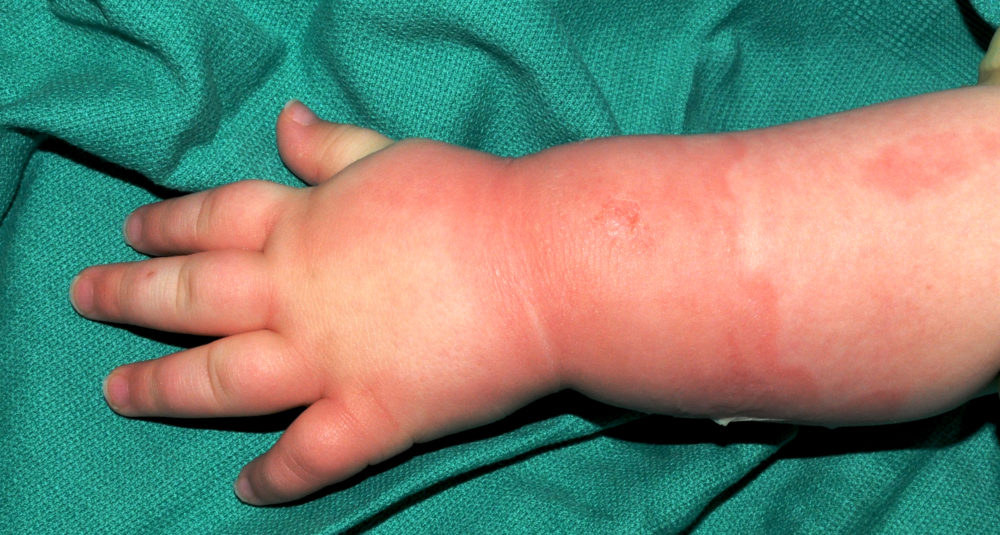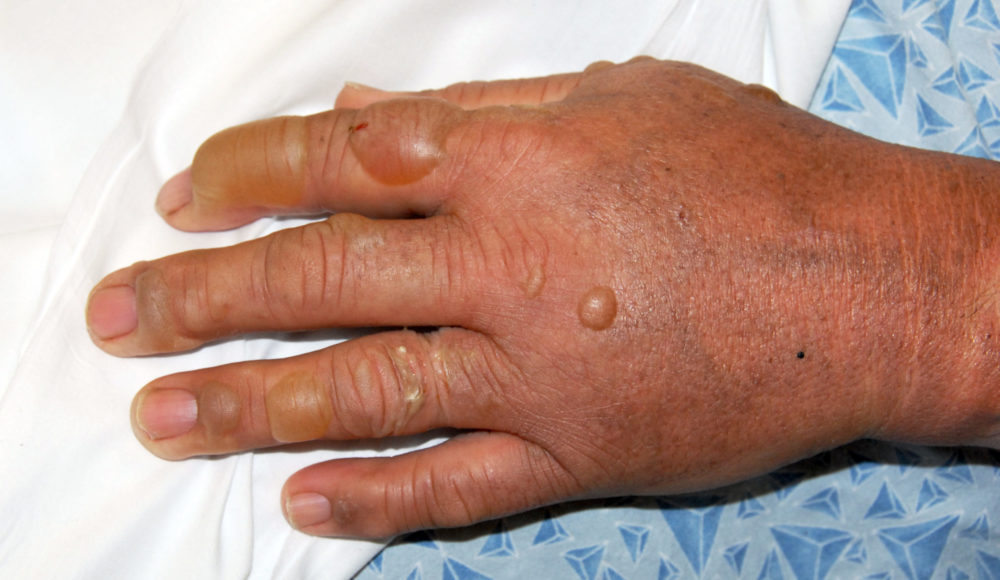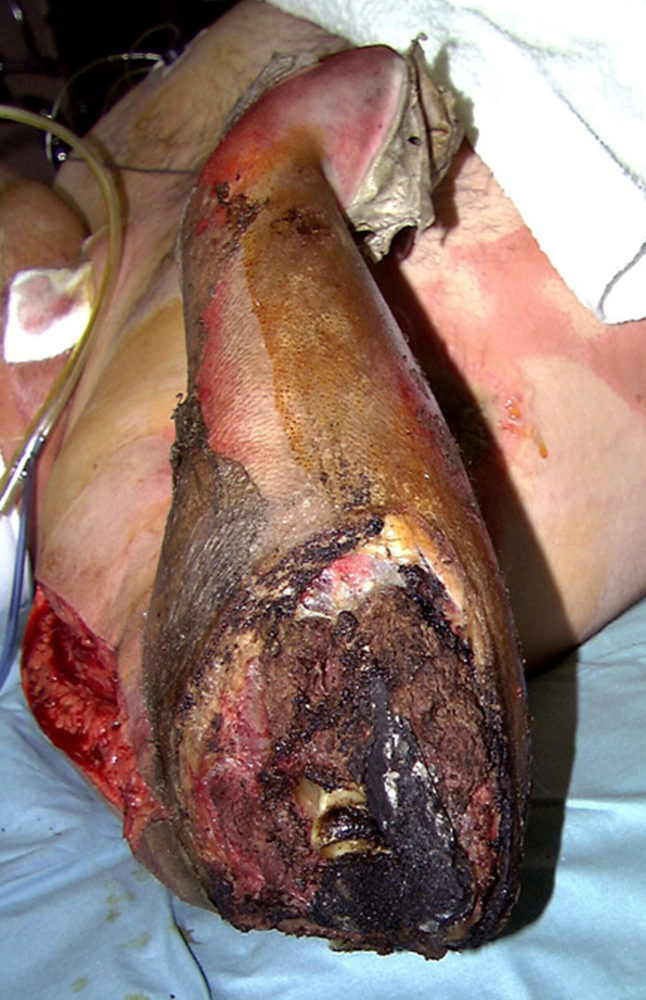What is a Thermal Burn?
Thermal burns occur by directly contacting heated objects—hot water, steam, cooking oil, grease, hot surfaces and fire. At Burn and Reconstructive Centers of America, 85% of all burn injuries treated are thermal burns.
What is a thermal burn?
Thermal burns fall into six categories, including scalds, thermal contact burns, electrical burns, chemical burns, radiation burns, and burns caused by fire. Treatment plans for a thermal burn vary depending on the kind of burn sustained and the severity of the burn.
What is a thermal burn, and how can it be caused?
Grilling
According to the National Fire Prevention Association (NFPA), roughly half of the injuries involving grills are thermal burns. Propane and charcoal grills should only be used outdoors. Grills should be placed a safe distance from the home, deck railings and overhanging tree branches. Always make sure the grill lid is open before lighting it and never leave any grill unattended. Once grilling is complete, be sure to shut off the propane to reduce gas leaks and let the hot coals from charcoal grills completely cool down. Did you know that propane tanks can expire? Don’t worry; each propane tank is stamped with information like when it was manufactured or last certified. From there, you can figure out if your tank is still good to use!
Cooking
Always keep loose items away from the stovetop. If you have children or pets in the home, make sure they are kept well away from the stove-top or oven. Never leave a stovetop unattended. According to the U.S. Food and Drug Administration (FDA), most microwave injuries are thermal burns from hot containers, overheated foods or exploding liquids. Only use approved microwave safe products and do not heat food in metal or plastic containers as they may melt, damage the microwave or spark a fire. Always allow the food to cool before removing it from the microwave.
Candles
According to the National Fire Protection Association (NFPA), U.S. fire departments respond to an average of 7,610 house fires as a result of candles each year and December is the peak month. In fact, three times as many candle and incense fires occur on Christmas day. Always keep burning candles or incense within sight and make sure to extinguish both before leaving a room or going to sleep. Never burn a candle or incense on or near flammable objects. Keep both candles and incense out of reach of small children and pets and be sure to burn them in a well ventilated area
Fireworks
The mishandling or misuse of fireworks, along with improperly discarded hot debris, are among the most common hazards when it comes to thermal burn injury to the hands, legs, or head.
WHEN HANDLING FIREWORKS REMEMBER TO:
- Set up the firework on a flat surface to reduce the risk of tipping over.
- Educate children on proper firework etiquette: don’t get too close and don’t touch.
- Closely monitor children when they have sparklers.
- Avoid re-lighting, leaning over, or picking up a “dud.” The firework is still live and has the potential to go off.
Can Water cause thermal Burn Injury?
Bath time can be a very relaxing experience, but thermal burn injury can happen in seconds if the bath water is too hot. To be safe, test the temperature of the water before use. Instead of feeling the water with your hand, put your elbow in it. If the water feels hot on your elbow, the temperature is too hot. If you find that your bath water is too hot, you can add cold water to cool it down or wait until it naturally cools. According to the CDC, bathtub temperature should not be higher than 104°F
Coffee is often served at 175 °F, making it high-risk for causing severe thermal burns. Use a lid or thermos to reduce the risk of spilling. Also, make sure to keep it out of reach of children. If you suffer a hot beverage burn, soak the burn in cool water for about five minutes, which can help reduce swelling by pulling the heat away from burned skin. Then, treat the skin with antibiotic ointment and wrap it loosely in a dry gauze bandage.
Can Appliances Cause Thermal Burn Injury?
Personal heaters can be thermal burn injury and fire hazards, especially old ones. Most new heaters should turn off if they get tipped over, but many old ones do not and can catch flammable materials on fire. Make sure you place your heater at least three feet away from you and anything flammable. Before leaving the house or the office, turn off and unplug your heater. And always plug your heater directly into the wall outlet. Never use an extension cord or power strip.
According to the Electrical Safety Foundation International (ESFI), heating pads and electric blankets are responsible for causing approximately 500 fires each year in the U.S. Always inspect the electrical heating device before use for cracks or frays in the electrical cord. Do not place or allow anything on top (pets, other blankets, etc.) of a heating pad when in use.
According to the U.S. Fire Administration, more than 2,900 fires occur each year as a result of home clothes dryers. Annually, this results in an estimated 5 deaths, 100 injuries and $35 million in property loss/damage. Be sure to consistently empty the lint trap before use to avoid risk of fire. Additionally, make sure to check the outside vent to ensure proper airflow. If possible, try to run the dryer when home and keep an eye on it.
Can Pavement Cause Thermal Burn Injury?
Watch the interview here.
What is a thermal burn, and how severe is it?
First-Degree Thermal Burns
- Marked by red, pink or darkened skin.
- Painful and warm to touch.
- No blisters or skin sloughing present.
- Not included in TBSA calculation.
Second-Degree Thermal Burns
- Moist, reddened, blistered and painful to touch.
- Blanch to touch.
- Risk of developing into a third-degree thermal burn. Moreover, reassess second-degree thermal burns to ensure the injury has not converted to a third-degree thermal burn.
Third-Degree Thermal Burns
- Dry/tight/leathery, brown/tan/waxy or pearly white.
- Devoid of blanching or capillary refill.
- Relatively pain-free, lacking blisters and may initially appear as second-degree.
- Need skin grafting to heal.
Fourth-Degree Thermal Burns
- Charred appearance.
- Extend below the dermis and subcutaneous fat into the muscle, bone or tendon.
- Treatment of these injuries may require the prioritization of preserving the patient's overall health versus treating the injured appendage.
If you are in uncontrollable pain, have second-degree thermal burns larger than your palm or anything that looks charred, dry or is painless, seek immediate medical care. Additionally, you may need to call 911 for emergency medical transport, including:
- Extensive second-degree thermal burns on the body
- Any third- or fourth-degree thermal burns on the body
- Difficulty breathing due to facial burns
- Large smoke exposure in a closed room
- If the injured person is unconscious
WHAT IS A THERMAL BURN’S RECOVERY TIME?
The time it takes for a thermal burn to heal can vary wildly depending on various factors. This includes the cause of the thermal burn, the severity of the burn, and how quickly treatment or medical attention is sought. Listed below are examples of average recovery times based on severity.
First-degree thermal burn
First-degree, or superficial burns, are contained within the epidermis, and the nerve endings remain intact. There is typically no need to access a healthcare center, as these burns can heal within three to five days with minimal intervention.
Second-degree thermal burn
The thermal injury definition of a second-degree burn is one that partially damages the nerve endings and leaves thickness burns. These burns may appear more advanced, but they can heal within 10 to 15 days based on average healing times.
Expect minimal scarring under the right conditions. However, changes to your skin pigment may occur. Again, formal medical intervention is typically not required, but it is considered best practice to consult your doctor for an examination.
Third-degree thermal burn
Known as full-thickness burns, understanding what can cause a thermal burn of this nature can enable you to seek immediate medical attention to control the damage and minimize any risk to your health.
These burns cause significant scarring and require long healing times. It can take months for these burns to heal.
Fourth-degree thermal burn
Any article on this subject will tell you that these are the most severe burns involving subcutaneous fat, muscle and bone and require an immediate trip to a hospital. Treatment will focus on preserving the patient’s health before moving to debridement, dermal autografts and possibly even blood transfusions and amputations.
If you sustain a fourth-degree thermal burn, permanent scarring should be expected, along with a long recovery path.
If you’re a healthcare provider looking to refer a patient, check out our referral process and how we’re able to assess and create a care plan in minutes.



